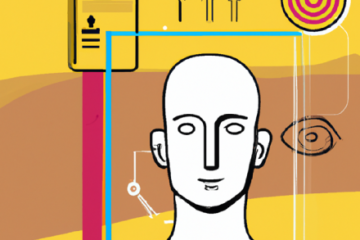Establishing Accountability for CX Outcomes
Establishing accountability for CX outcomes to build linkages with internal revenue/cost metrics

When we talk about customer experience, it is easy to see that it can lead to loyal and satisfied customers. From there, it is not difficult to reach word of mouth marketing and repeat purchases by this customer. But can CX also lead to the generation of value? Value in terms of revenue/cost metrics? Yes, it can, only if you put the right mechanisms in place.
Depending on your CX maturity levels, you can start thinking about accountability for CX outcomes and link it with internal revenue/cost models. You can take a free CX Maturity Assessment Test to find out.
Best Practices of CX Programmes
Many companies begin their CX programme with broad strokes of wanting to “transform” or “disrupt” it and “wow” their customers. They fail to quantify their outcomes or how it will lead to the fulfilling of business goals. Here are some best practices of CX programmes:
Strategy
What is your CX vision? Developing this vision is the first step in creating organizational change in how your business views its customers and how they provide value. By having a CX vision, you can develop and prioritize your initiatives.
Collaboration in cross functional teams
Delivering a great customer journey sounds simple but there are significant inefficiencies in a typical customer journey. For example, how many times have you (as a customer yourself, speaking to a call centre executive) been at the receiving end of repeating your grievance every time your call is put on hold and then transferred to the appropriate team?
Collaboration between teams can help reduce these inefficiencies.
Robust mechanism to measure feedback
Keeping in mind your progress towards CX goals and CX vision, you must have a robust mechanism in place that can help you measure customer feedback and provide actionable goals. One such mechanism is the Net Promoter Score (NPS) that measures the likelihood of a customer recommending your business to anyone.
Accountability
Who is responsible for ensuring your CX vision is met? Who is making the action development plans to ensure your customer experience initiatives meet business goals?
Defining accountability for CX outcomes
There are two things you must do to define accountability: answer the question and monitor the results.
Define the who, what, how and the why of your CX vision i.e.
- Who is accountable,
- What they should do with results,
- How satisfaction leads to business goals, and
- Why is your vision the way it is.
Once you have answered the above questions, the next step in your progress towards CX goals is to monitor the results (via a feedback mechanism like NPS), understand those results and what your customer is telling you and take action to work on the feedback and close the loop.
Building linkages to internal revenue/cost metrics

As we mentioned above, it is easier to delight your customer than to define the cost of that delight and how it ultimately affects your bottom line. Some steps you can take to build linkages between your CX vision and internal revenue/cost metrics:
What customer behaviour = value for your business
Understand what customer behaviour underpins value in your industry. For example, if customers are satisfied with your company, they’ll be likelier to sign up for more products or pay a premium to have access to certain privileges, etc.
Data analysis
If you have been collecting feedback over a period of time, it will be a good idea to check how your NPS has shifted over time. It will also give you an overall understanding if your initiatives have converted into a higher NPS.
Do a breakpoint analysis
While we would love to provide everything that will make a customer’s journey smooth and make them likelier to come back, it is not feasible to do everything. A “breakpoint analysis” will help you to pinpoint at what point it will no longer be profitable for you to improve a particular touchpoint in the customer experience journey.
Define your KPIs clearly
Figure out the key performance indicators (KPIs) that are critical for you. Of course, KPIs should reflect the entire customer journey like call centre time and perception of service provided, etc. But don’t get carried away and create 20, 30 or 100 KPIs. Instead, narrow them down as much as you can so focussing on them becomes easier.
What is your company’s CX maturity level?
How ready is your organization to achieve CX excellence? Take this free CX Maturity Assessment Test to understand where you are and where you want to reach through LitmusWorld’s CX Maturity Roadmap.
After the assessment, receive an invite to an exclusive CX Masterclass with Rajdeep Charan – Sr. GM CRM & Customer Experience, Eureka Forbes, and Birender Ahluwalia – CEO, The Positivity Company.
Are you ready to kickstart your evolution through the CX maturity model?


